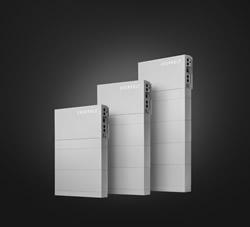Faulty connections during installation can lead to hot spots, and eventually to fires, faulty equipment either due to defects during the manufacturing process or due to damage or lack of maintenance, general degradation.
Talking with REC Solar about Preventing Solar System Fires
John Hostetter | REC Solar
Can you explain why solar system fires happen?
Solar system fires happen for a wide variety of reasons. Faulty connections during installation can lead to hot spots, and eventually to fires, faulty equipment either due to defects during the manufacturing process or due to damage or lack of maintenance, general degradation over time making a small problem worse as time and the elements cause wear and tear, the original designers not accounting for wear during the life of the system, or any number of other issues can cause a fire. I would break most of the potential issues that could cause a fire in a solar system into one of four categories. First off is faulty equipment. Second, improper design. third, improper installation, and fourth is a lack of adequate maintenance. Some older systems had modules with junction boxes that were under engineered, and led to a host of problems, including some fires. Design issues could include lack of accounting for thermal expansion of components, and over time the expansion and contraction of components can lead to a short, and potentially a fire. Alternately, poor design could include selection or use of equipment in a manner it isn’t designed to handle. Using indoor rated products outdoors, or selecting equipment of poor quality could be a design issue. Installation issues can lead to potential fires as well. Damage to equipment during installation is a problem, and low quality installation practices also leads to issues over time. Many of those issues can be caught and remedied before problems arise with proper preventative maintenance.
What are the weaknesses involved with solar electric generation systems?
A solar electric system is a power producing electrical system. A well designed and installed and maintained system can last for many years, which underscores the need to find a qualified and experienced provider when selecting your energy services partner. Just as your building can deteriorate with time and lack of maintenance, a solar electric system should have maintenance as well to remain in top shape for production and safety. Older systems sometimes had problems with designers not properly accounting for thermal expansion of components.
How often should solar electric generation systems be examined/checked?
We recommend at least one preventative maintenance inspection per year.
Can a customer/solar user check their solar systems themselves, or should this just be left to the professionals?
If you’re concerned about your own solar system, your best move is to call an experienced operations and maintenance (O&M) service provider to inspect and verify your installation. Simple steps, such as scanning your equipment with an infrared camera, can identify hot spots that, left unattended, could lead to combustion. Once found, these developing problems can always be remedied at a far lower cost than system and structure repairs after an avoidable fire.
What should a customer/solar user do if they feel their system is in danger of catching fire?
If a customer is concerned about a potential fire, call a professional Operations and Maintenance provider immediately, and ask for an inspection. Many providers will offer a service to inspect your system, and recommend maintenance to bring the system up to peak performance and safety.
From the very beginning, how can a customer/solar user ensure that they are maintaining their systems? What are best practices for solar electric generation system maintenance?
Best practice is to have a solar O&M professional maintain your solar system. A good maintenance professional will recommend the appropriate amount of preventative maintenance checks for your system and the equipment used in your system. The specific recommendations for preventative maintenance will vary depending upon the specifics of your system and the equipment used. For example, a single axis tracker needs different maintenance as compared to a fixed tilt roof mount system.
Does a solar user need special home insurance to cover a possible fire hazard?
We recommend you speak with your insurance provider to confirm, we are not insurance providers and don’t know the details of your specific policies. That said, a typical customer of ours is covered by their normal insurance policies.
 About John Hostetter
About John Hostetter
John Hostetter has personally designed and overseen the engineering of thousands of solar systems since 2005. His background includes 18 years of project and system design and engineering for companies large and small, ranging from Boeing Satellite Systems to an electrical construction design firm to REC Solar. John holds a master’s degree in Aerospace Engineering from California Polytechnic University, San Luis Obispo. Formerly responsible for Engineering, Estimating, Supply Chain, IT , John now leads the development of new product offerings for REC Solar by working with partners, customers, and all internal departments to create innovative energy solutions.
The content & opinions in this article are the author’s and do not necessarily represent the views of AltEnergyMag
Comments (0)
This post does not have any comments. Be the first to leave a comment below.
Featured Product

